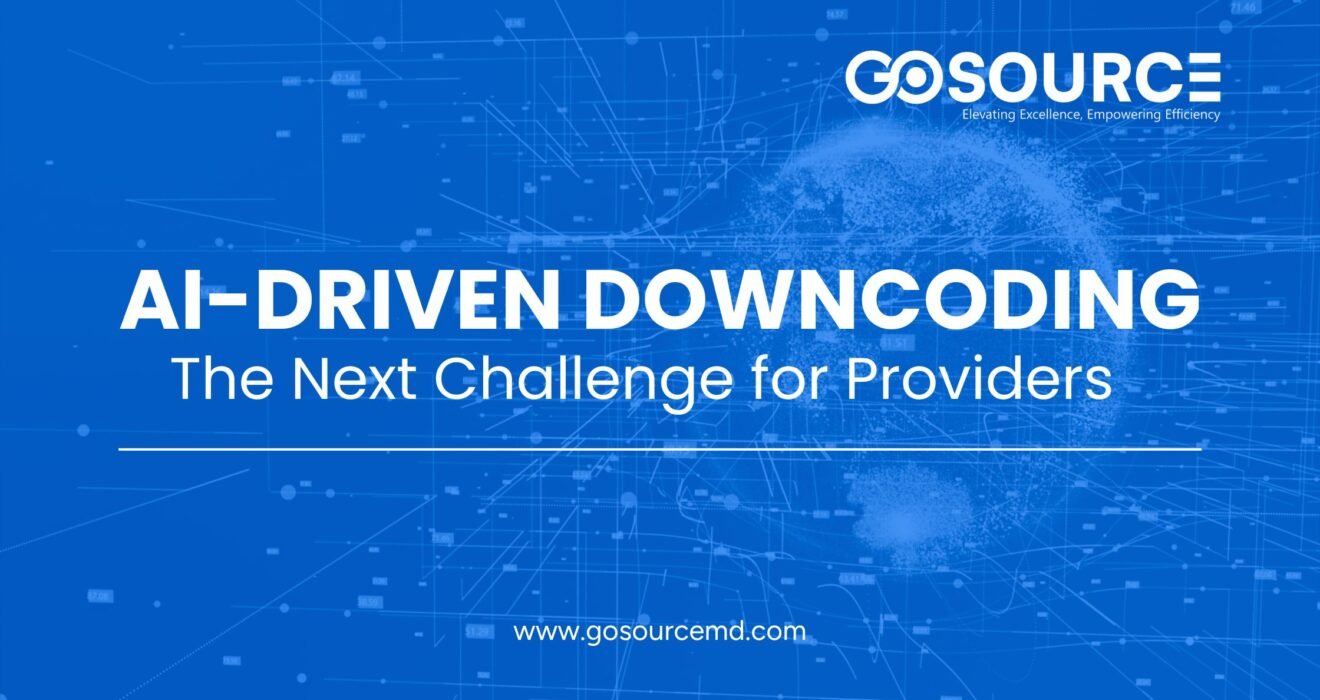Downcoding: A Strategic Shift That Will Reshape Reimbursements
On October 1, 2025, payors and at least one major has announced they will start downcoding will implement policies that automatically reduce high-level Evaluation & Management (E/M) services when the submitted diagnosis does not justify the complexity of the visit.
For many providers, this might sound like “just another payer rule.” But in reality, it represents a broader trend: payors are increasingly relying on automation and algorithms to challenge provider claims without manual review.
As someone who has spent over 25 years in the revenue cycle management (RCM) space, I see this as more than a coding issue. It’s a strategic shift in how reimbursement will be controlled in the coming years.
Table of Contents
ToggleWhat’s Changing
Here’s what providers should understand:
- Automatic Reductions: High-level E/M codes (99204, 99205, 99214, 99215) will be automatically downcoded by one level if the diagnosis doesn’t support the billed complexity.
- No Human Review: These changes will occur algorithmically, without the chance to justify medical necessity upfront.
- Appeals Burden: Providers will carry the burden of appealing downcoded claims, which increases administrative time and costs.
Why This Matters Beyond One Payor
Although one major payor has made the first move, history tells us that payer practices spread quickly. What starts as one initiative often becomes an industry standard. UnitedHealthcare, Aetna, and others are already exploring similar automation strategies.
In other words, this isn’t just one payor’s problem, it’s the future of payer behavior.
The Risks for Providers
If practices don’t adapt, they face three major risks:
- Revenue Loss
Practices will experience significant revenue loss and payment delays which will impact cash flow.
- Operational Strain
Billing teams already juggle denials, AR follow-up, and prior authorizations. Adding systematic downcoding creates more rework, slowing collections and stretching teams thin.
- Compliance Exposure
If documentation is inconsistent or insufficient, providers could face additional audits beyond downcoding, raising compliance risks.
What Providers Should Do Now
As many practices are experiencing an increase in AI-driven denials, now providers must be prepared for automatic downcoding which will increase the cost-to-collect for the same reimbursement.
It is critical for medical practices to start measuring their reimbursements by CPT code and just as important, their denial and appeal success rates to capture this potential lost revenue.
Here’s where providers should focus:
- Strengthen Documentation
Train clinicians to document the medical necessity of high-level visits in a way that aligns with payer expectations. Clear linkage between diagnosis and visit complexity is key.
- Audit Internal Claims
Review your last 90 days of high-level E/M claims. Identify how often these codes are billed and whether documentation consistently supports the level chosen.
- Track Downcoded Claims
Build internal reports to measure when and how often downcoding occurs. Data will be essential for appeals and identifying payer behavior patterns.
- Prepare Appeals Workflows
Partner with billing experts who not only ensure your clinical documentation is thoroughly reviewed before claim submission, but also tenaciously pursue timely appeals, maximizing your revenue and minimizing delays.
How GoSource Supports Providers
At GoSource, our role is not just to process claims, it’s to assist providers in navigating payer shifts with confidence. With a combination of expert coders, denial management teams, and AI-powered claim monitoring, we ensure that:
- Claims are coded and submitted with payer policies in mind.
- Downcoded claims are quickly identified, appealed, and recovered.
- Providers gain insight into trends so they can adjust documentation practices proactively.
While payer policies may evolve, our commitment remains constant: protecting the financial health of providers while letting them focus on patient care.
Conclusion
Downcoding is a signal of things to come. Automation, payer-side AI, and coding scrutiny are no longer isolated events, they are becoming systemic.
The providers who succeed in this environment will be those who invest in documentation discipline, leverage data-driven insights, and partner with RCM experts who stay ahead of industry shifts.
At GoSource, we see this not as a challenge, but as an opportunity: to assist providers in building resilience in the face of constant change.

About Author
Derick D. Perkins, MBA/MHA, CSPPM
Derick Perkins, Chief Strategy Officer at GoSource, brings 25+ years of experience in medical billing and revenue cycle management. He partners with healthcare providers to reduce denials, improve reimbursements, and navigate industry shifts with confidence.


